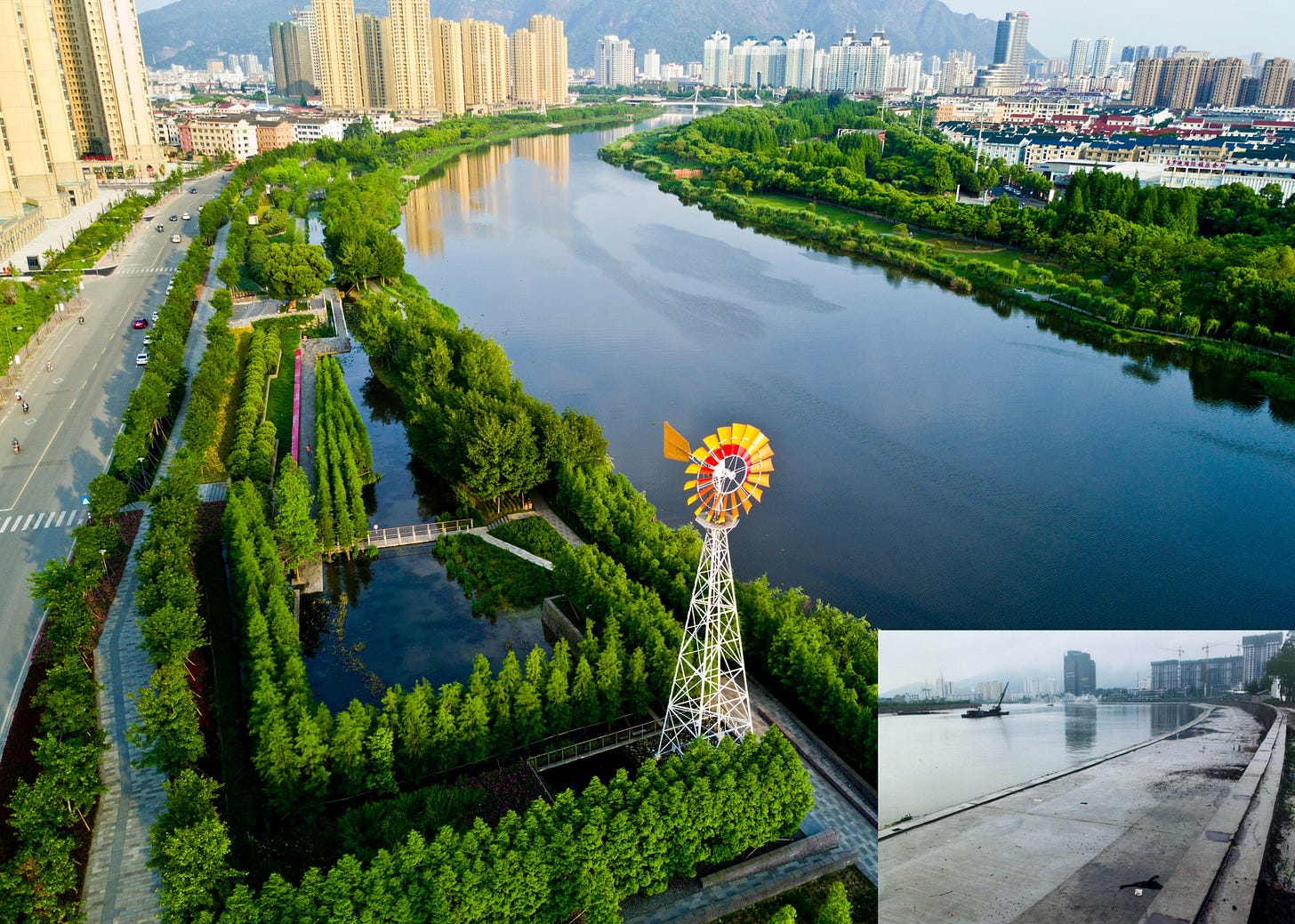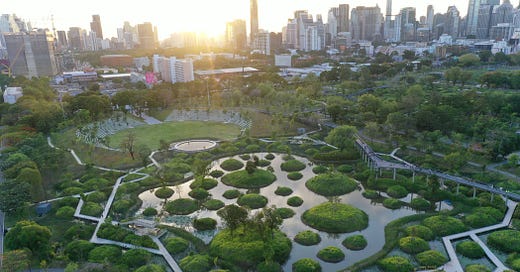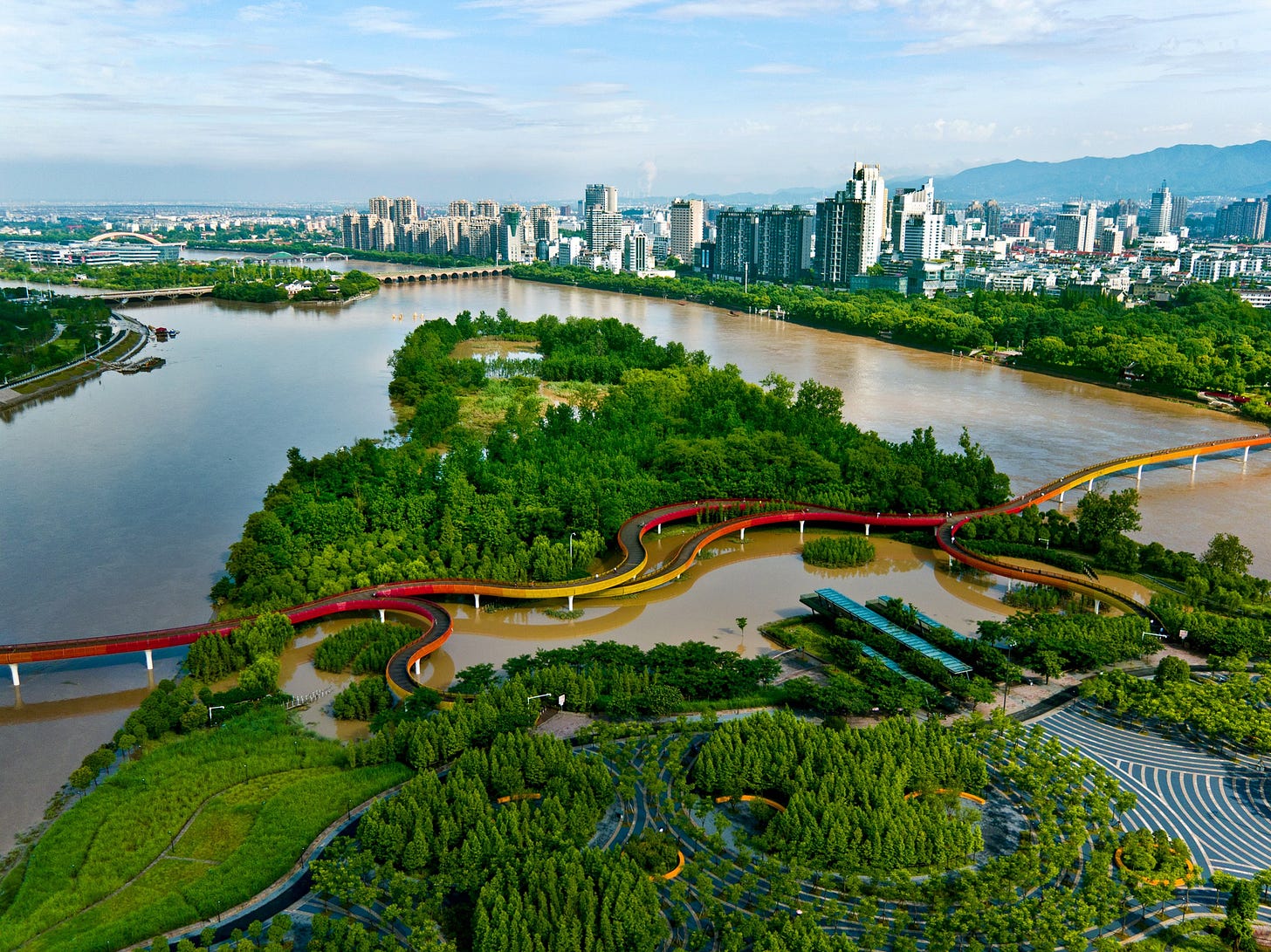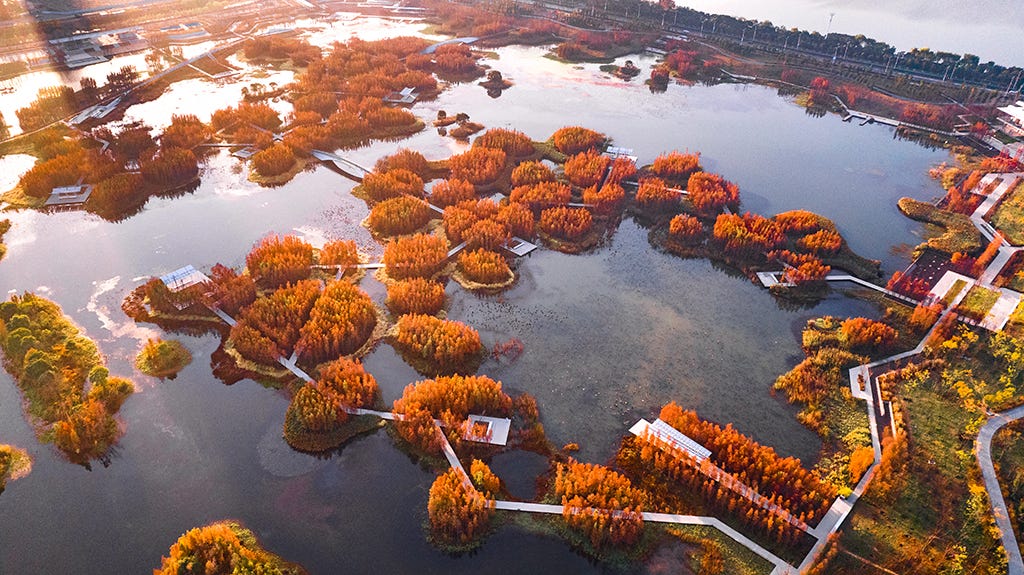Let's Work with Natural Systems
When seeking out climate solutions, we need to work with and as part of natural systems—not against them. Sponge cities are a great example of how this can work.
NPR recently aired a segment on “sponge cities,” a landscape architecture concept pioneered by Yu Kongjian that replaces our urge to use concrete to control urban waterways with natural landscapes that absorb water like a sponge.
The combination of urbanization and climate change make urban flooding an increasingly large problem, with devastating results. As the MIT Technology Review notes:
Since the 1700s, we’ve filled or drained as much as 87% of the world’s wetlands, which would otherwise be flexibly absorbing and releasing water. It’s a key reason urban flooding is increasing worldwide: as populations grow and cities expand, builders pave floodplains and farmland, fell forests, and channelize rivers, leaving stormwater that once filtered into the ground with nowhere to go.1
Climate change is compounding this problem. Every 1 °C increase in temperature results in the atmosphere holding 7% more water vapor; more water vapor makes storms bigger, and we don’t have all of the natural systems in place to absorb the water in our concrete cities.
The classical approach to this problem is to build bigger and stronger concrete structures that focus on a single issue like flooding or droughts. Yu believes that this approach, which he likens to “boxing with nature”, is counter-productive and undermines natural systems. I agree, and his metaphor reminds me of The Control of Nature, a great book by John McPhee that details three pitched battles between human and nature.
Instead, Yu believes that we should “play tai chi with nature” and build sponge cities. Through a combination of terracing, ponding, dyking and ponding, and islanding, sponge cities create spaces for water to spread out and seep underground, which both prevents flooding and stores the water for later use. In his Ted Talk, Yu discusses how his approach combines sophisticated modeling techniques and ancient farming practices in monsoon climates.
In Zhejiang Province, Yu and his team replaced an aging concrete flood wall that couldn’t handle increasing high water levels with a terraced river bank that included natural grasses, willows, reeds, overflow ponds, and permeable footpaths. It’s as stunning and it is effective (see image below).
At the Nanchang Fish Tail Park, Yu transformed a 126-acre coal ash dumping group into a “floating forest that regulates stormwater, provides habitat for wildlife, offers an array of recreational opportunities, and gives local residents a new way to connect with nature.”2 The lake at the center of the park can handle two meters of water-level rise, or 1 million cubic meters of stormwater inflow.
To give a sense of how sponge city parks can transform cities, consider this image of the Floating Gardens at Yongning, with the previous approach to controlling the water included in the lower righthand corner.

While sponge city projects are amazing, they cannot prevent urban flooding today. The reason is scale; a few sponge city parks spread across a massive urban center like Beijing or Bangkok don’t manage enough water to realize the full benefits of the concept. This lack of scale is a common critique, but it misses the point.
Our world is massive, and no novel solution can start at scale. Yu had 600 meetings with government officials over 20 years before he was able to build his first sponge city park in China. Now there are than 600 sponge city projects in 200 cities around the globe (you can check them out here).
Innovation is hard because what’s new is always riskier than the status quo. No one gets in trouble for following the conventional path. While risks that pay off are celebrated, those that don’t lead to finger pointing and recriminations. Yet without trying new things, we don’t have a chance of solving the climate crisis.
The good news is that people are discovering and rediscovering approaches that reveal how we can work with nature, not against it. I’ve previously written about how helping natural systems rebalance and heal by removing dams or restoring the habitats of keystone species can transform ecosystems.
We need more people like Yu Kongjian who push us to play tai chi nature. To live with, as part of, and in harmony with natural systems. Because the truth is, if we try to box our way to a lower carbon future by going against or trying to outsmart nature, we will be the ones who get knocked out.
https://www.technologyreview.com/2021/12/21/1041318/flooding-landscape-architecture-yu-kongjian/
https://amazingarchitecture.com/park/a-floating-forest-fish-tail-park-in-nanchang-city-china-by-turenscape





